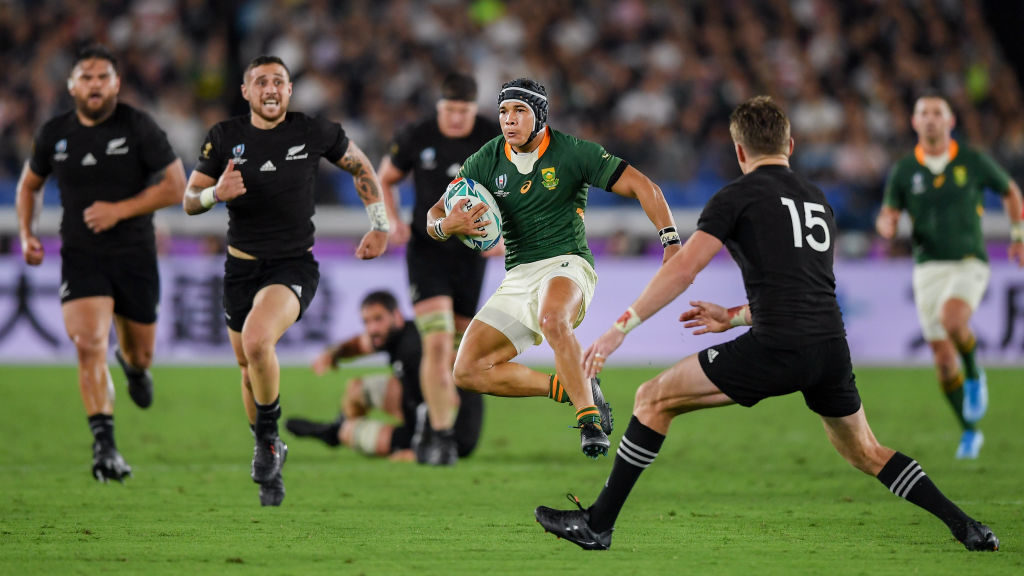The Springboks need to adopt a two-pronged approach in attack if they want to go deep into the tournament, writes former Bok hooker JAMES DALTON.
DALTON COLUMN: Not only the ref to blame for Boks
Yes, South Africa put Namibia away comfortably, just as they should have. But let’s bear in mind that it was by a score of only ten points more than what Italy did to Namibia, and in the final 15 minutes of the game a Bok side that should have finished the tired Namibians off scored no tries.
TEAM NEWS: Beast, Mbonambi in Bok team to face Italy
The Boks have now fielded their supposed first and second sides against their strongest and weakest opposition, respectively. What remains clear, regardless of the 15 players on the field or the 15 they face, is an inability to adapt the game plan to suit a game, and an inability to play with the same intensity in the last 20 minutes as they do in the first.
READ: Rassie: Players must set the tone
The Boks were quick out of the blocks against both the All Blacks and Namibia, but faltered and stagnated against both as the game progressed. The All Blacks are a great side, who often come into the game towards the end. But after 60 minutes against a team like Namibia, the Boks should have had them on their knees. Especially playing against 14 men!
They didn’t and this speaks volumes of a game plan that gets the ball no further than the centres, where it is simply taken to ground and recycled, or worse, aimlessly kicked away. Why were we kicking the ball away 19 times against Namibia? And why are we never looking for offloads and making an effort to keep the ball alive? The Springboks’ inability to keep the ball alive through offloading and looking to pass beyond the first line of attack is going to be their achilles heel.
For all the territory and possession that the Boks have had in their first two matches, they have failed to do justice to those numbers by matching it on the scoreboard. Why? Because we are not looking to score points further than what suits a predetermined game plan of crashing the ball up, resetting and building phases, or kicking and chasing from the ruck.
What is evident is that while yes, the Bok game plan when it works, works well, but they need to be able to tweak and adapt it to suit the style of the game and the opposition.
There appears, too, to be a lack of cohesion between the forwards and backs, which in turn creates the problem of not being able to keep the ball moving. It is as if the men up front are trying to find a different route to the tryline than the guys at the back, and neither are communicating to try to keep the game alive and attack flowing beyond the first phase of play.
Where the All Blacks are so good is that all 15 are consistently looking to keep their hands free in contact and move the ball beyond the gain line and the initial phase of play. This is one of the reasons why they are able to go from strength to strength against tiring opposition. This is directly in contrast to the Springboks who appear to stagnate as our inability to move away from our very direct approach – which, yes, works towards the start of matches – feeds directly into the hands of tired opposition as the ball is never stretched further than midfield, nor is it kept in play beyond the first tackle.
The Boks have the calibre of players to play both a direct and an elusive brand of rugby; they’ve also done it before in the last two years. What it boils down to is recognising when and where in a game certain tactics are and aren’t working, communicating this between backs and forwards, and adapting the approach to suit the context.
Photo: Ramsey Cardy/Sportsfile via Getty Images





